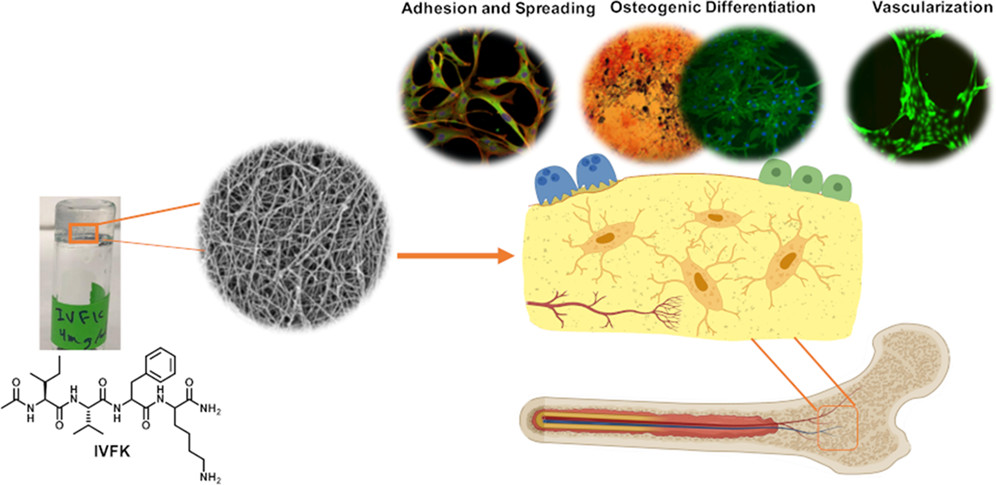
The apparent rise of bone disorders demands advanced treatment protocols involving tissue engineering. Here, we describe self-assembling tetrapeptide scaffolds for the growth and osteogenic differentiation of human mesenchymal stem cells (hMSCs). The rationally designed peptides are synthetic amphiphilic self-assembling peptides composed of four amino acids that are nontoxic. These tetrapeptides can quickly solidify to nanofibrous hydrogels that resemble the extracellular matrix and provide a three-dimensional (3D) environment for cells with suitable mechanical properties. Furthermore, we can easily tune the stiffness of these peptide hydrogels by just increasing the peptide concentration, thus providing a wide range of peptide hydrogels with different stiffnesses for 3D cell culture applications. Since successful bone regeneration requires both osteogenesis and vascularization, our scaffold was found to be able to promote angiogenesis of human umbilical vein endothelial cells (HUVECs) in vitro. The results presented suggest that ultrashort peptide hydrogels are promising candidates for applications in bone tissue engineering.


"KAUST shall be a beacon for peace, hope and reconciliation, and shall serve the people of the Kingdom and the world."
King Abdullah bin Abdulaziz Al Saud, 1924 – 2015
Thuwal 23955-6900, Kingdom of Saudi Arabia
Al-Haytham Building (Bldg. 2)
© King Abdullah University of Science and Technology. All rights reserved